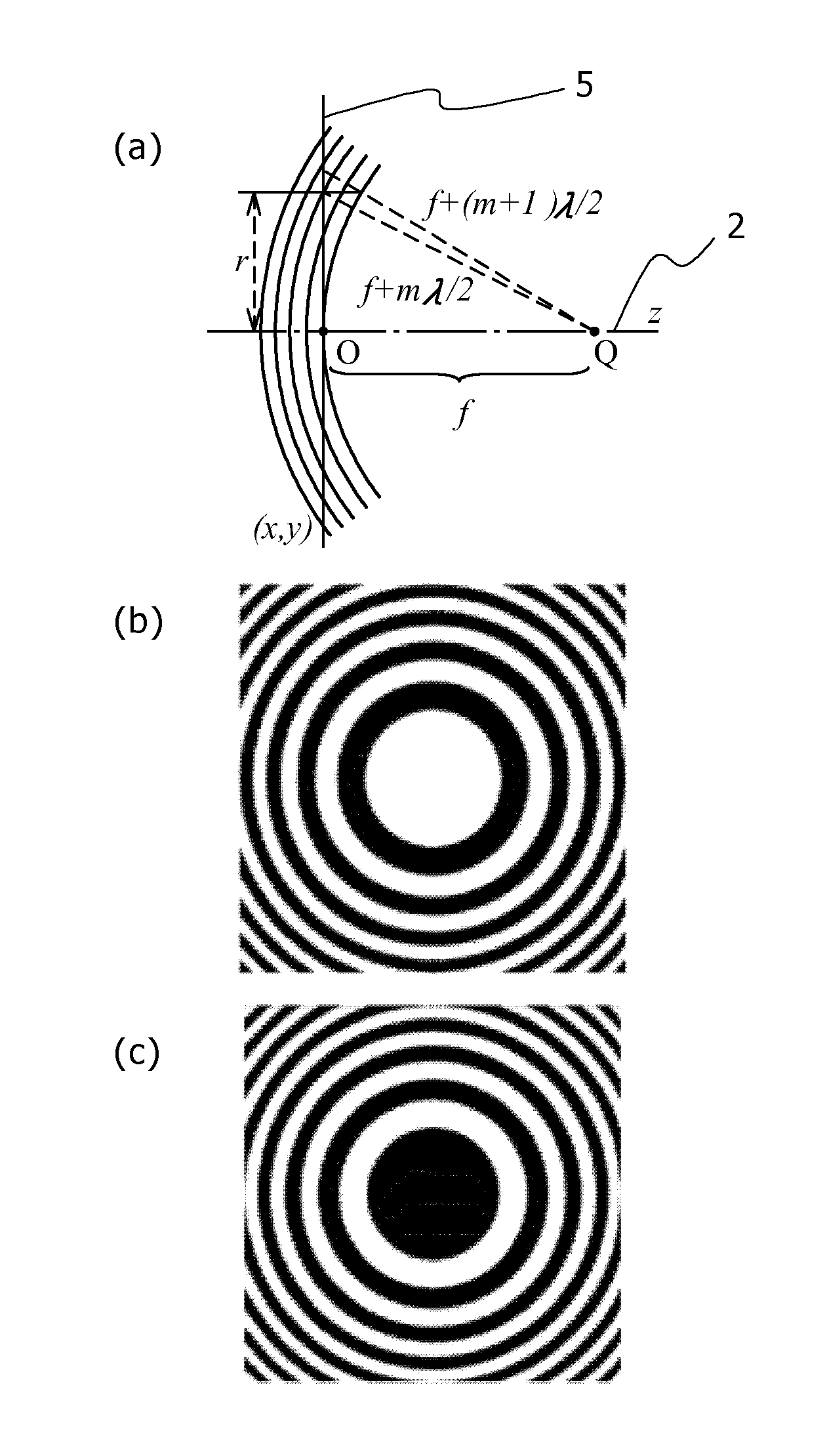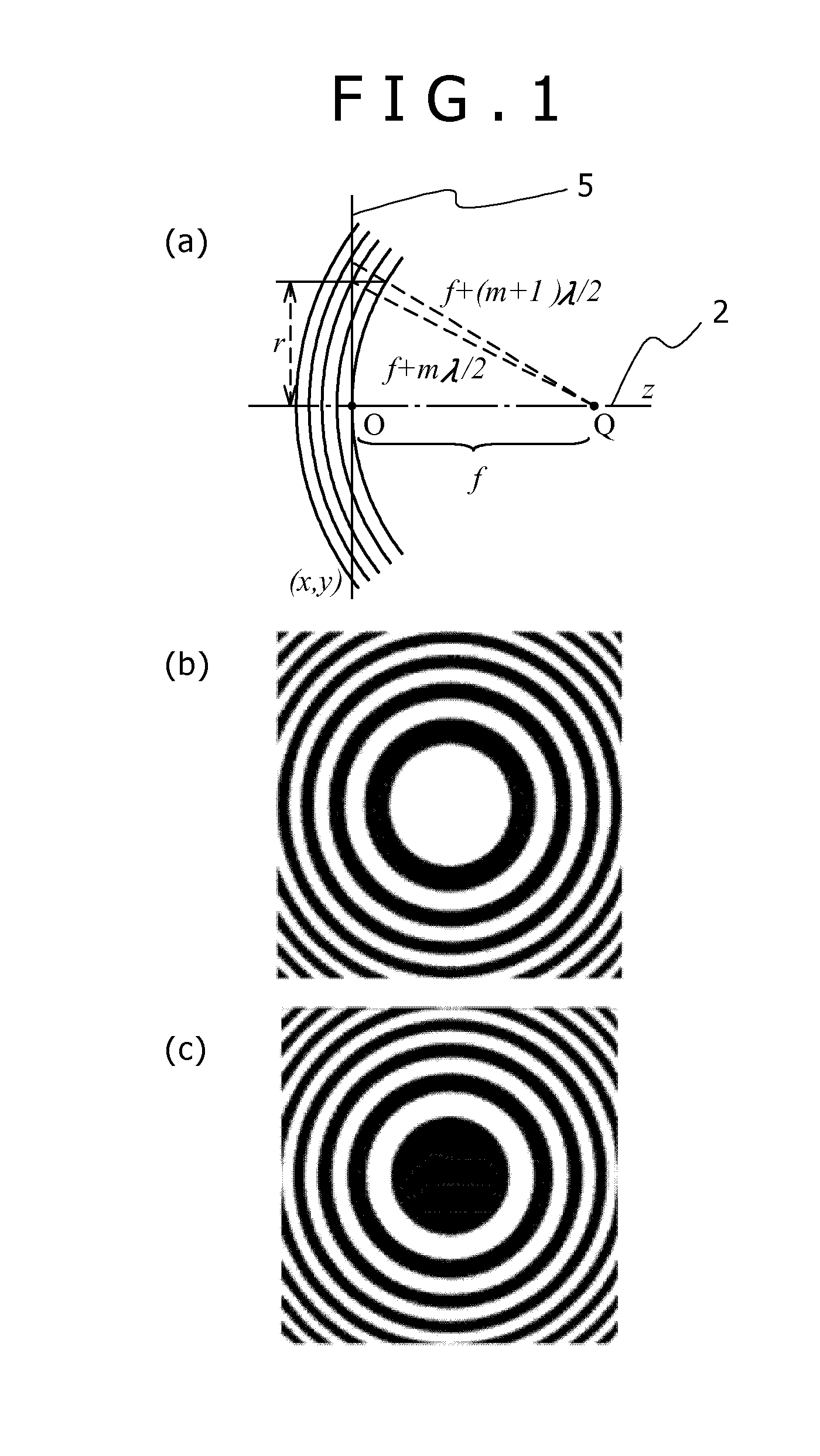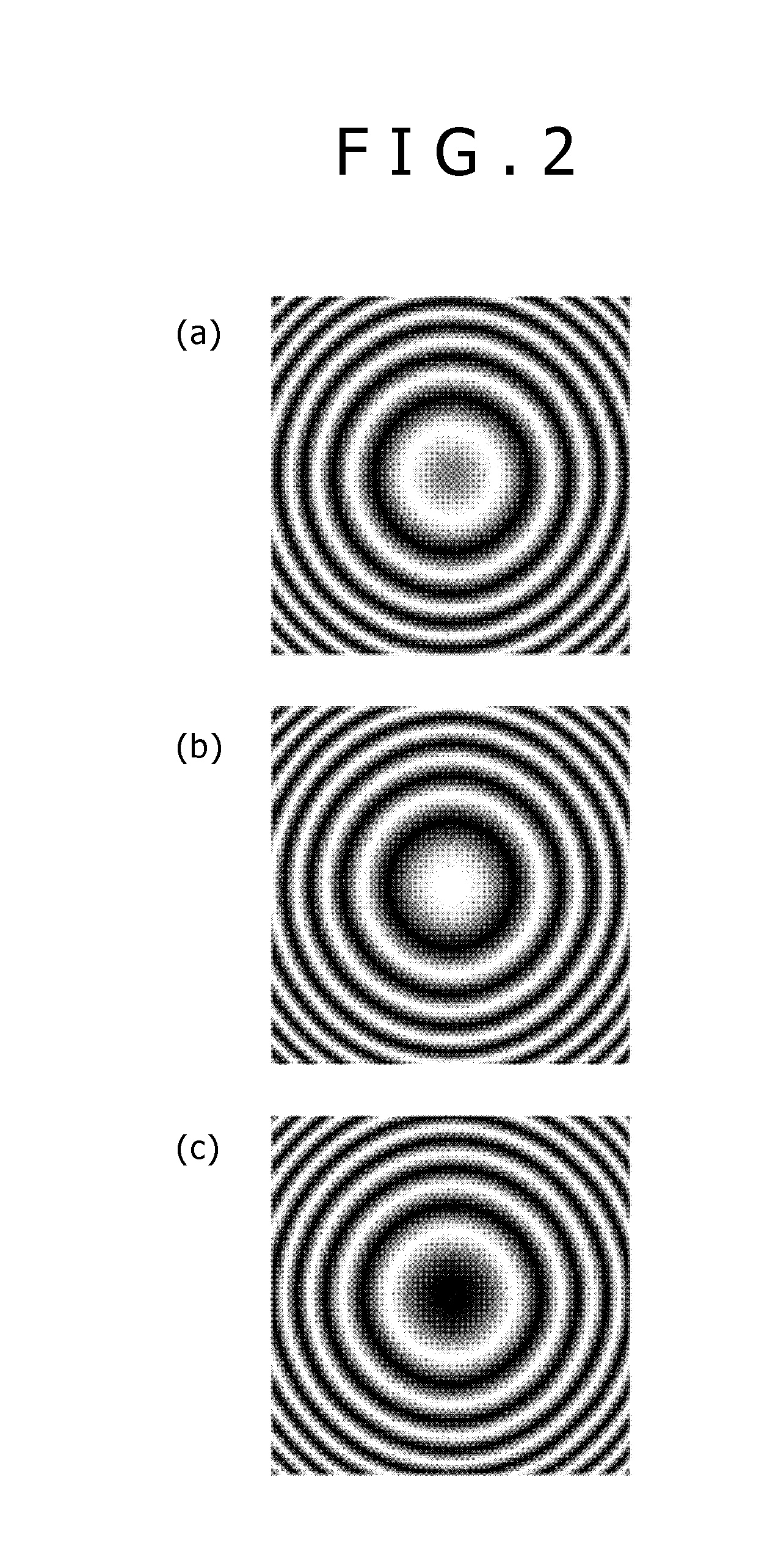Zone plate
- Summary
- Abstract
- Description
- Claims
- Application Information
AI Technical Summary
Benefits of technology
Problems solved by technology
Method used
Image
Examples
first embodiment
[0091]FIG. 13 is a pattern example of the zone plate for creating a wave front with one spiral axis. The zone plate is set up so that the axis of the spiral wave may be generated at the center of the zone plate, and the spiral center and the center of the zone plate coincide with each other. That is, the grating forms the spiral pattern as a result that a discontinuous point of the grating is located in the center of the zone plate and a nature of the spiral is reflected on the grating.
[0092]FIG. 13 (a) is a case of the spiral degree that is 1, FIG. 13 (b) is a case of the spiral degree that is two, and FIG. 13 (c) is a case of the spiral degree that is three. When the spiral degree is the second order or more, although the zone (grating fringe) of the zone plate makes a point contact in the central part of the spiral pattern, i.e., at a position of the edge dislocation, it is discontinuous as the grating even in this case.
[0093]The spiral patterns shown in FIGS. 13 (a), (b), and (c...
second embodiment
[0096]FIG. 14 illustrates the zone plate when the spiral zone plate shown in FIG. 13 is binarized. Since the zone plate has the spiral pattern, the wave-blocking section is always connected to a periphery of the zone plate. In order to illustrate it, a circumference of the zone plate is enclosed with a black zone in FIG. 14 to indicate a connection with the wave-blocking section of the wave clearly.
[0097]That is, in the zone plate having the spiral pattern, the special supporting substrate, the support rod, or the like for holding a wave-blocking section in space is not needed, and it becomes possible to hold the blocking section, as it is, in space because of rigidity of the material itself that forms the blocking section. This is a large advantage practically in the electron ray having a large interaction with the material that induces the supporting substrate or the support rod to produce an artifact, and other rays.
[0098]FIG. 14 (a) is a case of a spiral degree of 1, FIG. 14 (b)...
third embodiment
[0102]FIG. 15 shows an initial phase of the spiral wave that the spiral zone plate generates, in other words, a pattern of the zone when the initial phase of the edge dislocation is varied. Although FIG. 15 (a) coincides with FIG. 13 (a), the initial phase of the spiral wave is varied by 2π / 3 in FIG. 15 (b) and FIG. 15 (c), which is reflected on a start of wind of the spiral in a central part of the zone plate. If the zone plates as shown in FIG. 15 in which the initial phases of multiple spiral waves are supposed are prepared, it will become possible to control the initial phase of the spiral wave without mechanically rotating the zone plate.
[0103]The changes of the spiral pattern shown in FIGS. 15 (a), (B), and (c) correspond to cases where values of the parameter Φm, expressing the initial phase of the spiral wave are zero, 2π / 3, and 4π / 3 among the patterns of the interference fringe expressed by Formula 12 and Formula 14, respectively.
PUM
 Login to View More
Login to View More Abstract
Description
Claims
Application Information
 Login to View More
Login to View More - R&D
- Intellectual Property
- Life Sciences
- Materials
- Tech Scout
- Unparalleled Data Quality
- Higher Quality Content
- 60% Fewer Hallucinations
Browse by: Latest US Patents, China's latest patents, Technical Efficacy Thesaurus, Application Domain, Technology Topic, Popular Technical Reports.
© 2025 PatSnap. All rights reserved.Legal|Privacy policy|Modern Slavery Act Transparency Statement|Sitemap|About US| Contact US: help@patsnap.com



